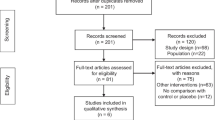Abstract
Objective
Cubital tunnel syndrome (CuTS) is the second most common compression neuropathy in the arm, but the existence of a compressive cause has not been determined conclusively and the majority of the cases are idiopathic. In this paper, involvement sides of limbs of patients with cubital tunnel syndrome were studied.
Material and methods
Between October 2008 and December 2011, the clinical assessment of consecutive operated patients with cubital tunnel syndrome in Rize Education and Research Hospital were analysed. The diagnosis and severity of syndrome was based on electro-diagnostic study.
Results
This study included 57 consecutive patients with cubital tunnel syndrome (39 men, 18 women; mean age, 44,7 years; range, 23–79 years; mean age, 44,7 years; range, 23–79 years); 31 patients underwent surgical treatment. Involvement was on the right side in 18 and on the left in 39 patients. Severity scores and MCV were statistically significant between sides.
Conclusion
Profound involvement with cubital tunnel was found in left elbow. According to the finding of non-dominant elbow involvement in our study, the exact etiology and ideal management of cubital tunnel syndrome continues to be heavily debated.
Similar content being viewed by others
Abbreviations
- CuTS:
-
Cubital tunnel syndrome
- MCV:
-
Motor conduction velocity
References
Artico M, Pastore FS, Nucci F, Giuffre R (2000) 290 surgical procedures for ulnar nerve entrapment at the elbow: physiopathology, clinical experience and results. Acta Neurochir (Wien) 142(3):303–308
Bartels RH, Verbeek AL (2007) Risk factors for ulnar nerve compression at the elbow: a case control study. Acta Neurochir (Wien) 149(7):669–674
Calisaneller T, Ozdemir O, Caner H, Altinors N (2011) Simple decompression of the ulnar nerve at the elbow via proximal and distal mini skin incisions. Turk Neurosurg 21:167–171
Cutts S (2007) Cubital tunnel syndrome. Postgrad Med J 83:28–31
Erol B, Tetik C, Sirin E (2004) The mid-term results of minimal medial epicondylectomy and decompression forcubital tunnel syndrome. Acta Orthop Traumatol Turc 38:330–336
Feindel W, Stratford J (1958) The role of the cubital tunnel in tardy ulnar palsy. Can J Surg 1:287–300
Flores LP (2010) Endoscopically assisted release of the ulnar nerve for cubital tunnel syndrome. Acta Neurochir (Wien) 152:619–625
Gelberman RH, Yamaguchi K, Hollstien SB, Winn SS, Heidenreich FP Jr, Bindra RR, Hsieh P, Silva MJ (1998) Changes in interstitial pressure and cross-sectional area of the cubital tunnel and of the ulnar nerve with flexion of the elbow. An experimental study in human cadavera. J Bone Joint Surg Am 80:492–501
Kanat A, Epstein CR (2010) Challenges to neurosurgical professionalism. Clin Neurol Neurosurg 112:839–843
Kanat A, Yazar U (2013) Spinal surgery and neurosurgery: Quo Vadis? J Neurosurg Sci 57:75–79
Kanat A, Yazar U, Kazdal H, Yilmaz A, Musluman M (2009) Neurosurgery is a profession. Neurol Neurochir Pol 43:286–288
Keiner D, Gaab MR, Schroeder HW, Oertel J (2009) Comparison of the long-term results of anterior transposition of the ulnar nerve or simple decompression in the treatment of cubital tunnel syndrome–a prospective study. Acta Neurochir (Wien) 151:311–315
Mowlavi A, Andrews K, Lille S, Verhulst S, Zook EG, Milner S (2000) The management of cubital tunnel syndrome: a meta-analysis of clinical studies. Plast Reconstr Surg 106:327–334
Nathan PA, Keniston RC, Meadows KD (1995) Outcome study of ulnar nerve compression at the elbow treated with simple decompression and an early programme of physical therapy. J Hand Surg Br 20:628–637
O’Driscoll SW, Horii E, Carmichael SW, Morrey BF (1991) The cubital tunnel and ulnar neuropathy. J Bone Joint Surg Br 73:613–617
Osborne G (1970) Compression neuritis of the ulnar nerve at the elbow. Hand 2:10–13
Robertson C, Saratsiotis J (2005) A review of compressive ulnar neuropathy at the elbow. J Manipulative Physiol Ther 28:345
Simsek S, Er U, Demirci A, Sorar M (2011) Operative illustrations of the Osborne’s ligament. Turk Neurosurg 21:269–270
Steiner HH, von Haken MS, Steiner-Milz HG (1996) Entrapment neuropathy at the cubital tunnel: simple decompression is the method of choice. Acta Neurochir (Wien) 138:308–313
van Rijn RM, Huisstede BM, Koes BW, Burdorf A (2009) Associations between work-related factors and specific disorders at the elbow: a systematic literature review. Rheumatology (Oxford) 48:528–536
Wadsworth TG, Williams JR (1973) Cubital tunnel external compression syndrome. Br Med J 17:662–666
Wadsworth TG, Williams RM (1977) The cubital tunnel external compression syndrome. Nurs Times 73:1357–1359
Wadsworth TG (1977) The external compression syndrome of the ulnar nerve at the cubital tunnel. Clin Orthop 124:189–204
Conflicts of interest
None.
Author information
Authors and Affiliations
Corresponding author
Rights and permissions
About this article
Cite this article
Kanat, A., Balik, M.S., Kirbas, S. et al. Paradox in the cubital tunnel syndrome—frequent involvement of left elbow: first report. Acta Neurochir 156, 165–168 (2014). https://doi.org/10.1007/s00701-013-1851-5
Received:
Accepted:
Published:
Issue Date:
DOI: https://doi.org/10.1007/s00701-013-1851-5




